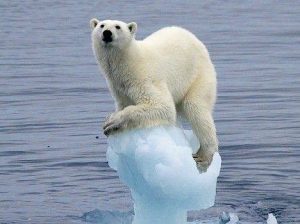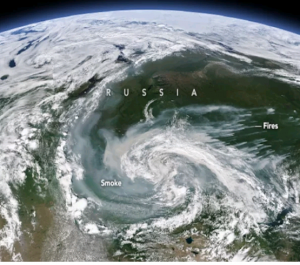5 August
I haven’t written about the climate change for quite sometime now. The reason is: there are conflicting ideas emerging from those who believe the climate change is really taking place and from those who are denying it. Those conflicting ideas made the situations very confusing. As the so-called experts or scientists from both camps are adamant that their opinions are right, I don’t want to get caught in between the two schools of thoughts.

Although I haven’t written anything relating to the climate change lately, I have never lost track of the latest developments concerning that subject. From what I had learned and noticed, I believe that the climate change is really taking place.
The world is reeling under the extreme weather conditions, desertification, draughts, flooding and the shrinking of the land masses and some ocean islands disappearing due to ocean levels rising. These are real and undeniable facts that our planet Earth is facing today. If these adverse consequences are not due to the climate change, then what could be the real cause behind them? I don’t think the climate change deniers have any plausible explanations, but blindly denying vehemently.
In the past I had written extensively about how the over-loggings, encroachments of the forest areas for agricultural and industrial developments and wildfires had led to the deforestations, and the extensive use of fossil fuels gave way to the productions of the greenhouse gases. In those articles I had tried to explain how these in turn trigger the global warming that causes the temperature rises and lead to the climate change. Thus in this article I will not be going into detail about them as I believe that more and more people are coming to realize and recognize those facts as the root causes of the climate change. However, I may be repeating what adverse consequences we could face in the future if the temperature rises cannot be reined in as required by the agreements reached at the United Nations Climate Change Conferences (UNFCC) held in Paris in 2015, known as COP21.
Recently there were reports of numerous wildfires raging on in the Artic region. That is a cause for concern for everyone all over the globe. Since the month of June this year, which was the hottest June ever recorded, more than 100 wildfires are raging on inside the Artic circle in Russia, Greenland and Alaska. The cause of the fires are thought to be mostly caused by lightening strikes. Wildfires are quite common in the summer times in the Artic, but this year’s wildfires are burning farther north than in the past.
Russia is the worst hit, where wildfires are burning in 11 of the country’s 49 regions, affecting even in fire-free areas, where people are choking on smoke that is blowing across the country. The largest fires are located in the regions of Irkutsk, Krasnoyarsk and Buryatia, according to the Earth Observatory.
These conflagrations have burned 320 square miles (829 square kilometers), 150 square miles (388 square km) and 41 square miles (106 square km) in these regions, respectively, as of July 22.
According to the same source, the Russian city of Krasnoyarsk is under a layer of haze. While Novosibirsk, Siberia’s largest city, doesn’t have any fires as of now, smoke carried there by the winds caused the city’s air quality to drop significantly. Wildfires are also burning in Greenland and parts of Alaska since June. It’s common for fires to burn during the Arctic’s summer months, but the number and extent this year are “unusual and unprecedented”.
According to the CNN reports, these fires are taking toll on the atmosphere; they’ve released about 100 megatons of carbon dioxide from June 1 to July 21, which is roughly equivalent to the amount of carbon dioxide Belgium released in 2017. The Arctic is heating up faster than other parts of the world, making it easier for fires to thrive there. In Siberia, for example, the average June temperature this year is nearly 10 degrees Fahrenheit (5.5 degrees Celsius) hotter than the long-term average between 1981 and 2010. Russia on Monday, 29 July, declared a state of emergency in two regions of Siberia as wildfires rage across 12,000 square miles of countryside. Terrified residents in the Krasnoyarsk and Irkutsk regions called on the state to act as flames engulfed an area the size of Belgium.
Many of this summer’s fires appear to be burning in peat soils, rather than in the forests. This is a dangerous situation, because whereas forests might typically burn for a few hours, peat soils can blaze for days or even months. Moreover, peat soils are known as carbon reservoirs. As they burn, they release carbon, which will further exacerbate greenhouse warming, leading to more fires. It is a universally accepted fact that the greenhouse gases are the main driving forces behind the global warming that cause temperature rises, which fuel the climate changes.
Even as I am writing this article the Arctic ice is crashing, and that is bad news for everyone. This fits in exactly with our expectations of long-term climate change. Over the next few days, Greenland is expected to roast as the weather system that fueled Europe’s second record-smashing heatwave of the summer advances north and west. Scientists are warning of what could be a near-record melt-out across the northern ice sheet’s surface, one that may also impact sea ice surrounding the island. This ice melting would cause the ocean level to rise all over the planet.
Having stated the latest situations of the wildfires raging on in more than 100 places in the Artic, let us observe how seriously damaging those developments can cause to us humans, the animals and our planet itself. One thing that is undeniable is the climate change will significantly worsen. When that happens, all the adverse consequences of the climate change will take place: draughts, desertification, depletion of grazing grounds for animals, flooding, melting of ice, ocean level rises, which will result in some ocean islands disappearing and low coastal areas to recede farther inland and thus depriving inhabitable and agricultural spaces. The worst case scenario would be wide spread conflicts between the people who are desperate to get arable spaces for their survival.
Even now, the climate change is “absolutely” already causing deaths, according to a new report on the health impacts of the climate crisis, which also predicts climate-related stunting, malnutrition and lower IQ in children within the coming decades.
The immediate effects are the health hazards caused by the smokes from the wildfires. They can be very fatal, especially to the infants and elderly persons. Causes of deaths due to respiratory problems will rise almost out of control in the neighbourhood of the wildfires and could reach epidemic proportions if the present situations in the Artic persist.
Some 200 reindeer have been found dead in the Norwegian archipelago of Svalbard in the Arctic, according to the Norwegian Polar Institute. This unusually high number of deaths resulted from climate change in the region, the Institute explained. Three researchers found the corpses of the animals, who died of hunger during the past winter, while conducting the Institute’s annual mapping of wild reindeer populations in the island group, located some 1,200 km from the North Pole. An expert attributed this “very high mortality rate” to the consequences of global warming, which, in the Arctic, is occurring twice as fast as in the rest of the world.
I can go on writing the adverse consequences of the climate change, but I hope I had said enough to convince some people, especially the climate change deniers that the climate change is real and here to stay. The only hope for the Earth and all living things — humans, animals, trees and plants alike, is for a miracle to happen. Some scientists are predicting a solar minimum to take place soon. If that should happen the planet would cool down, but from past experience such a solar minimum could cause a Mini Ice Age. The last time a prolonged solar minimum was the Maunder minimum, which saw seven decades of freezing weather, which began in1645 and lasted through to 1715. That would be another long story, which I may write about sometimes in the future.
However, such a situation too is undesirable, which would be like, how should I put it, because the most common phrase to describe such a situation as “out of the frying pan into the fire” would be irrelevant here. Thus the best solution would be for all nations to abide by the Paris Agreement or the COP21, which set parameters to fight the climate change. The most important amongst those parameters is to control the temperature rise at 1.5° Celsius or less above the average temperature level of the pre-industrialization periods, by controlling the carbon dioxide emissions.
By Khin Maung Myint


